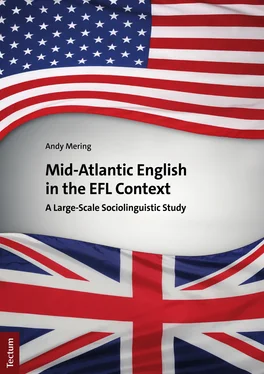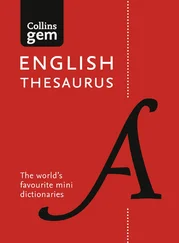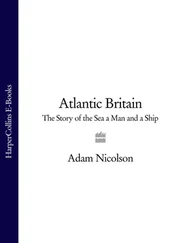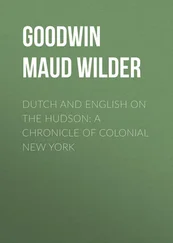The ubiquitous and pluricentric nature of English, one of the approximately 7,000 extant languages in the world, is unquestionably ascribable to two factors, namely “the expansion of British colonial power” and “the emergence of the United States as the leading economic power of the 20th century” (Crystal, 2003b, p. 106). Hence, English fulfils a key function for NNSs. They are afforded the unprecedented opportunity of playing an active part in a dynamic, multilingual, and multi-cultural metropolis by using English as an intra-European lingua franca with cross-cultural communication goals for a vast array of purposes. Nevertheless, mainstream ELT practices are more or less still rooted in rather conservative, well-established foreign-language learning pedagogies aiming at compelling EFL learners to adopt and emulate as the sole variety either BrE in most cases, or AmE, although the latter to a much lesser degree. This quasi-uncontested axiomatic status of BrE supremacy as the educational standard has been seriously challenged in recent years by a changing sociolinguistic profile through linguistic Americanisation with its global reach.
In order to arrive at an improved understanding of today’s sociolinguistic situation within the framework of a hybrid usage of BrE and AmE, it is important to be cognisant of another important sociolinguistic fact: the balance between NSs and NNSs has undergone a significant shift and will surely continue to do so in the future. Crystal maintains that the native to non-native ratio already amounts to at least 1:4 now (Mugglestone, 2006, p. 490). In concrete figures, based on his estimates, he claims that there are currently 320–380 million ENL 6speakers, 300–500 million ESL speakers and between 500 million and 1 billion EFL speakers (Crystal, 2003a, p. 61).
As pointed out above, today’s EFL students assuredly bring a mix of BrE and AmE to the classroom experience. This mix is, on the one hand, to be traced back to intramural English instruction, i. e. in-school, formal learning and on the other to extramural English 7, viz. out-of-school, informal learning of English. Both these terms were coined by Sundqvist. Either of them “covers aspects of both input and output” (2009, p. 25). This novel sociolinguistic situation is ascribable to a huge upsurge in linguistic Americanisation because of America’s “size, wealth, industrial might and military strength” (Engel, 2017, p. 5). In the same vein as Sundqvist, it can be posited that this extramural input is by no means non-negligible and is, on the contrary, an indispensable element of “a pedagogy of the authentic”, by which Claire Kramsch (as cited in Modiano, 2009, p. 189) refers to EFL practitioners’ methodological responsibility of being aware of the actual contexts in which EFL learners are making use of English. This actual context is marked by a ‘MAE’ usage, which has the sociolinguistic potential of being more efficient in international encounters.
Modiano views a mixed use of BrE and AmE as the first stage in this incipient language change, which the current research seeks to identify. In his view, it is the stepping stone to the movement towards ‘Euro-English’. He is confident that ‘MAE’, a hybrid form of the two major strands of English, will become the standard for language education in the EU and finally the conceptualisation Euro-English will gain acceptance. Modiano states that “it has become apparent that English is fast becoming a basis for the establishment of a common European social and cultural order,” so “the English of mainland Europe should go through processes of legitimization, codification, and standardization” (Modiano, 2003, p. 36). As a consequence, a Euro-English speaker will typically speak a mixture of unmarked RP features and features of GA (Modiano, 1996b, p. 211). Further, Modiano contends that the conditions are ripe for the formation of ‘MAE’/’Euro-English’, especially after Britain’s withdrawal from the EU: it should act as an official language for cross-cultural communication within the EU. Euro-English will evolve in much the same manner as other second-language varieties of English, such as Indian and Nigerian Englishes. According to Modiano, this would best reflect Europeans’ needs: claiming the ownership of their distinctive lingua franca. Such positioning would represent the fundamental tenet of Kachruvian sociolinguistics.
Kachruvian sociolinguistics refers to Kachru, an Indian linguist who conceptualised the spread of English by representing it as three concentric circles. These include countries which use English as a native language, labelled as Inner Circle varieties. They are norm-providing. Countries where English is spoken as a second language, typically in postcolonial settings such as India, Malaysia, and Nigeria, belong to Kachru’s outer circle. They are norm-developing, and English became an official or co-official language in education, the media, business, the legal system, church, etc. Countries in which English is widely taught as a foreign language in school and university contexts, but in principle does not have any internal functions, are part of Kachru’s expanding circle. These countries are norm-dependent, i. e. they rely on notably BrE and AmE standards.
Returning now to Modiano’s vision of English, he illustrates his conceptualisation of the role of the English language with the aid of a model. In his diagram, speakers of English are divided into five groups: speakers of AmE, BrE, other native-English varieties of English, local, so-called second-language varieties such as Indian and Nigerian English and lastly speakers of English as a foreign language. According to Modiano, each of these five groups display three types of language features. At the very outer edge of his diagram are those language features that are culture-specific and therefore not part of Modiano’s English as an International Language core (henceforth abbreviated to EIL), the common denominator for all English users. 8They are not readily understood by most members of the other groups. For example, this may be the case when a BrE speaker addresses an international forum by employing ‘surgery’. ‘Doctor’s office’ is probably the term that is better understood internationally. The second circle represents features that have the potential to become international currency and hence can neither be clearly allocated to the outer area nor the common core in Modiano’s model. Modiano illustrates this with the Australian lexical item ‘station’, a ‘sheep farm’ or ‘ranch’ (2020, p. 76). The third language type refers to the centre of his model. It represents those features of international comprehensibility. These speakers in the centre use English as an International Language (Modiano 2009, p. 97). Modiano’s model of English is extremely useful, especially due to its focus on international comprehensibility. Ultimately, it is vital that English speakers in international settings apply a “dynamic linguistic relativism”. This encapsulates recognition of variation and change. It will, in Crystal’s opinion, be the “chief challenge facing ELT specialists” (Crystal, 2001, p. 63).
Crystal therefore advocates World Standard Spoken English (henceforth abbreviated to WSSE), a ‘variety’ used, for instance, at international conferences, where all interlocutors make a conscious effort to avoid the idiosyncratic features of their national varieties, be it BrE, AmE or any other English, native or non-native. In this manner, he places both NS as well as NNS users of English on an equal footing by linguistically establishing a democratic basis with a high potential for mutual understanding. Crystal even maintains that WSSE, a neutral ‘variety’, intelligible to all English speakers, “will make redundant the British/American distinction. British and American English will still exist, of course, but as varieties expressing national identity in the UK and USA. For global purposes, WSSE will suffice” (2003a, p. 189). Still, the notion of ‘MAE’ as defined by Modiano highlights the interplay of the two major systems. He views ‘MAE’ as being “indicative of an awareness of how American and British English features can be used strategically to benefit the communicative act.” In his opinion, this ‘MAE’ usage among the L2 English-language user contingency together with “features from mainland European languages, as well as new coinages invented” will result in the emergence of “a distinct and potential variety in its own right” (Modiano, 2009, p. 62). As posited by him, it will have second language status in the same manner as Indian, South African and Nigerian English has.
Читать дальше












